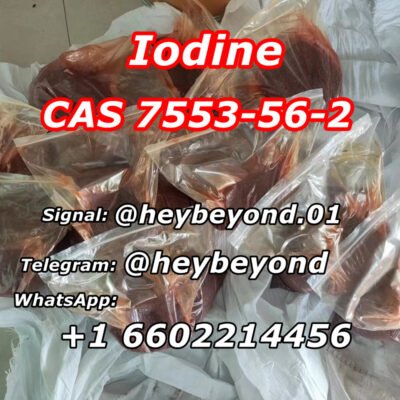Sodium borohydride CAS 16940-66-2, also known as sodium tetrahydridoborate and sodium tetrahydroborate, is an inorganic compound with the formula NaBH4 (sometimes written as Na[BH4]). It is a white crystalline solid, usually encountered as an aqueous basic solution. Sodium borohydride is a reducing agent that finds application in papermaking and dye industries. It is also used as a reagent in organic synthesis.
NaBH4 Product Information
| Product Name | Sodium Borohydride |
| Synonyms | AF;COBALT-DOPED SODIUM BOROHYDRIDE;SBH;SODIUM BORANATE;SODIUM BOROHYDRIDE;SODIUM TETRAHYDRIDOBORATE;SODIUM TETRAHYDROBORATE;BH4Na;Borate(1-), tetrahydro-, sodium;Borate(1-),tetrahydro-,sodium;Borate(1-)tetrahydro-,sodium;Borohydrure de sodium;borohydruredesodium;borohydruredesodium(french);borol;hidkitexdf;NaBH4;Sodium tetrahydroborate(1-);sodiumborohydrate |
| CAS NO | 16940-66-2 |
| Molecular Formula | BH4Na |
| Molecular Weight | 37.83 |
| Melting point | >300 °C (dec.)(lit.) |
| Boiling Point | 500°C |
| Flash Point | 158 °F |
| Density | 1.035 g/mL at 25 °C |
| Appearance | white crystalline powder |
| Storage | Store in cool, dry conditions in well sealed receptacles away from oxidizing agents |
| Solubility | 550 g/L (25 ºC) |
CAS 16940-66-2 Details

Properties
The compound is soluble in alcohols, certain ethers, and water, although it slowly hydrolyzes.
| Solvent | Solubility (g/(100 mL)) |
|---|---|
| CH3OH | 13 |
| CH3CH2OH | 3.16 |
| Diglyme | 5.15 |
| (CH3CH2)2O | insoluble |
Sodium borohydride is an odorless white to gray-white microcrystalline powder that often forms lumps. It can be purified by recrystallization from warm (50 °C) diglyme. Sodium borohydride is soluble in protic solvents such as water and lower alcohols. It also reacts with these protic solvents to produce H2; however, these reactions are fairly slow. Complete decomposition of a methanol solution requires nearly 90 min at 20 °C. It decomposes in neutral or acidic aqueous solutions, but is stable at pH 14.
Synthesis and handling
For commercial NaBH4 production, the Brown-Schlesinger process and the Bayer process are the most popular methods. In the Brown-Schlesinger process sodium borohydride is industrially prepared from sodium hydride (produced by reacting Na and H2) and trimethyl borate at 250–270 °C:
- B(OCH3)3 + 4 NaH → NaBH4 + 3 NaOCH3
Millions of kilograms are produced annually, far exceeding the production levels of any other hydride reducing agent. In the Bayer process, it is produced from inorganic borates, including borosilicate glass and borax (Na2B4O7):
- Na2B4O7 + 16 Na + 8 H2 + 7 SiO2 → 4 NaBH4 + 7 Na2SiO3
Magnesium is a less expensive reductant, and could in principle be used instead:
- 8 MgH2 + Na2B4O7 + Na2CO3 → 4 NaBH4 + 8 MgO + CO2
and
- 2 MgH2 + NaBO2 → NaBH4 + 2 MgO
Applications
Paper manufacture
The dominant application of sodium borohydride is the production of sodium dithionite from sulfur dioxide: Sodium dithionite is used as a bleaching agent for wood pulp and in the dyeing industry.
It has been tested as pretreatment for pulping of wood, but is too costly to be commercialized.
Chemical synthesis
Sodium borohydride reduces aldehydes and ketones to give the related alcohols. This reaction is used in the production of various antibiotics including chloramphenicol, dihydrostreptomycin, and thiophenicol. Various steroids and vitamin A are prepared using sodium borohydride in at least one step.
Niche or abandoned applications
Sodium borohydride has been considered as a way to store hydrogen for hydrogen-fueled vehicles, as it is safer (being stable in dry air) and more efficient on a weight basis than most other alternatives. The hydrogen can be released by simple hydrolysis of the borohydride. However, such a usage would need a cheap, relatively simple, and energy-efficient process to recycle the hydrolysis product, sodium metaborate, back to the borohydride. No such process was available as of 2007.
Although practical temperatures and pressures for hydrogen storage have not been achieved, in 2012 a core–shell nanostructure of sodium borohydride was used to store, release and reabsorb hydrogen under moderate conditions.
Skilled professional conservator/restorers have used sodium borohydride to minimize or reverse foxing in old books and documents.
Contact
Signal: @heybeyond.01
Telegram: @heybeyond
WhatsApp: +1 6602214456
Products Website: https://pmk-28578-16-7.com








Reviews
There are no reviews yet.